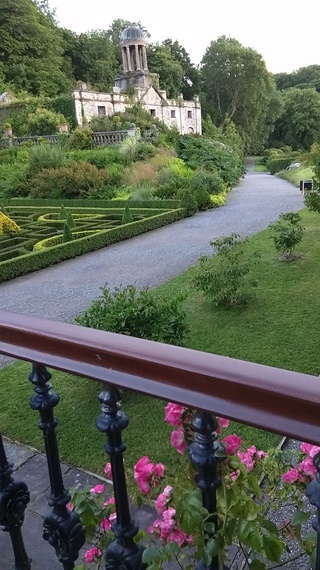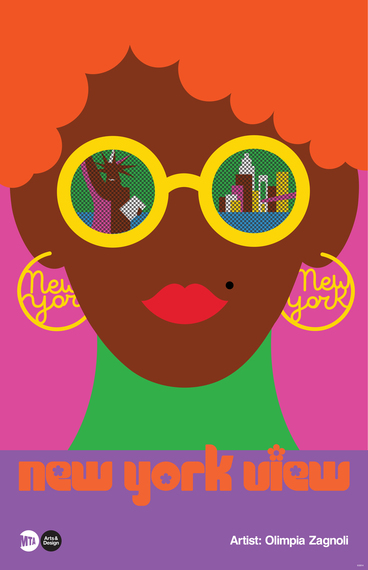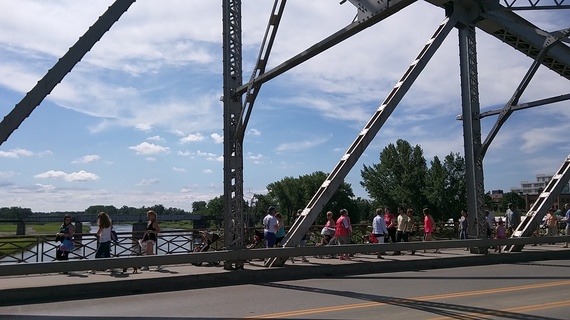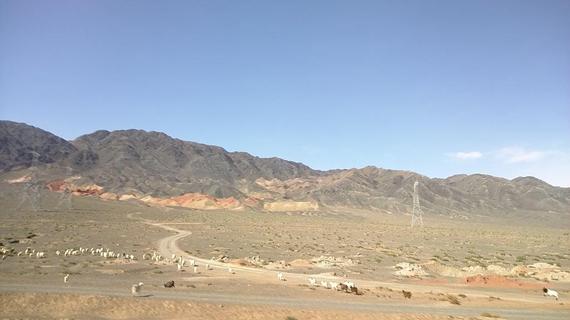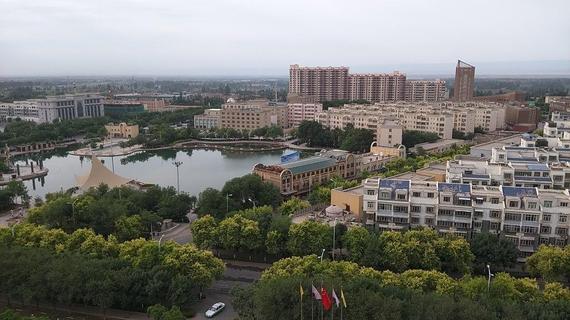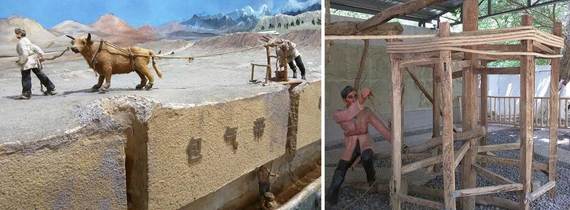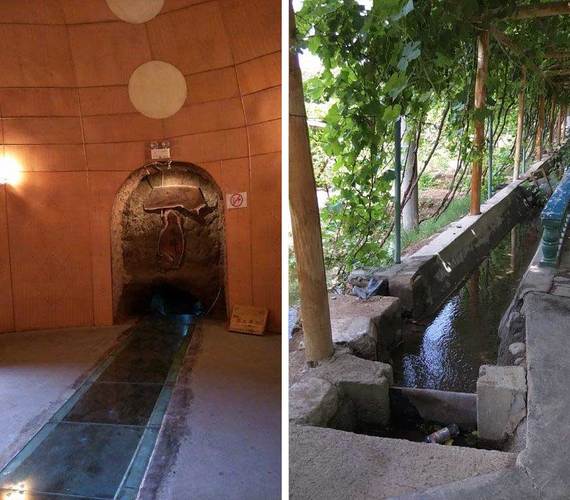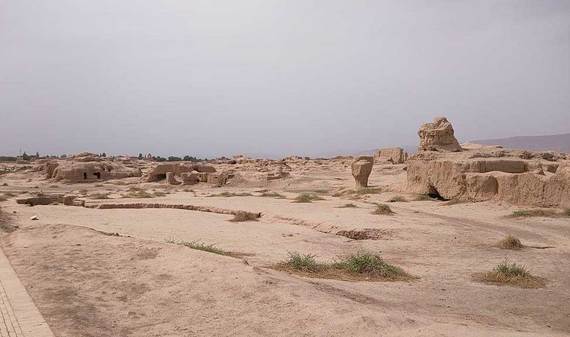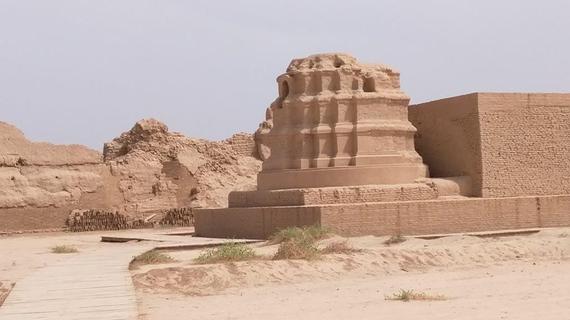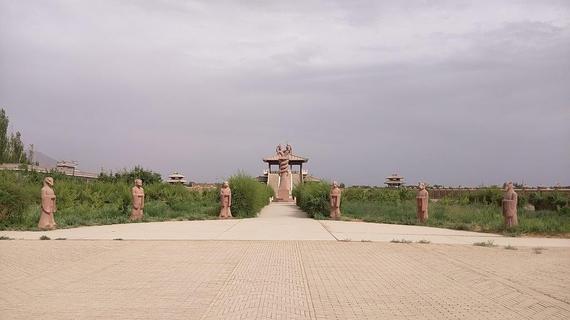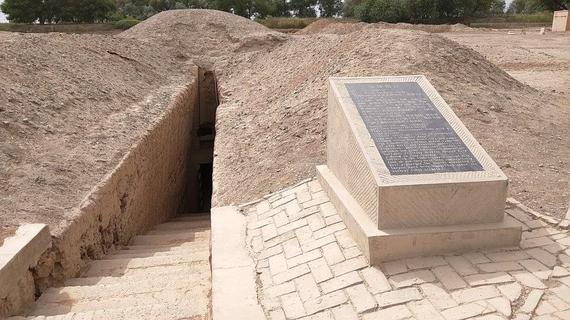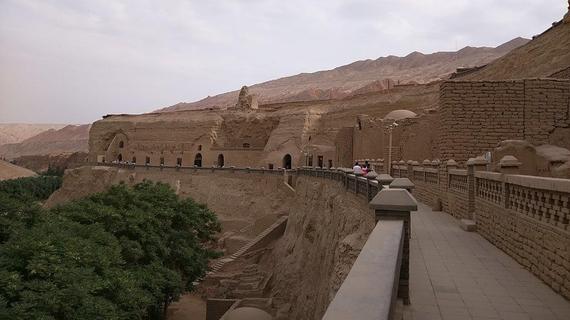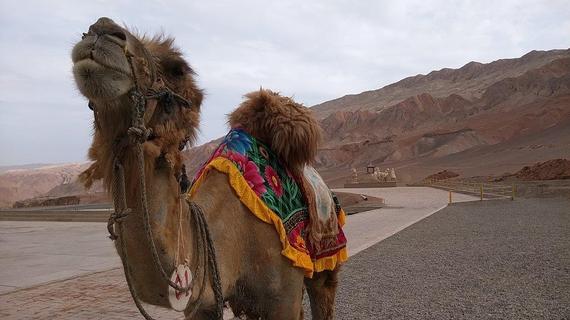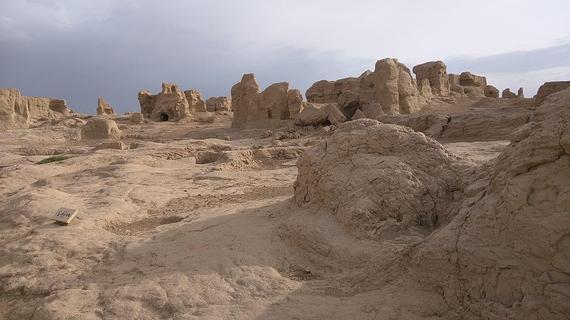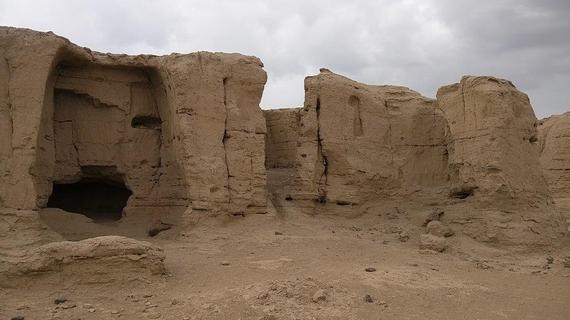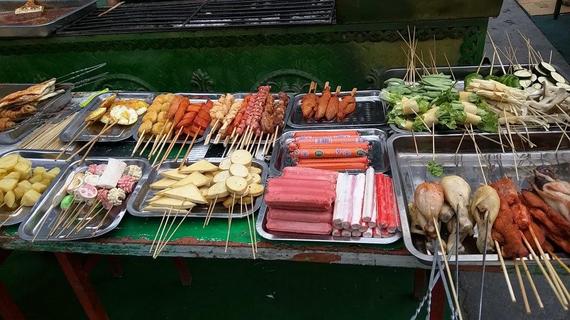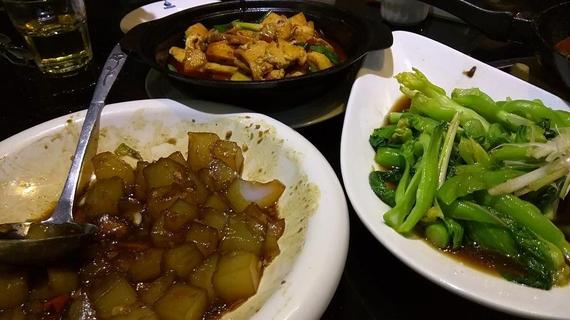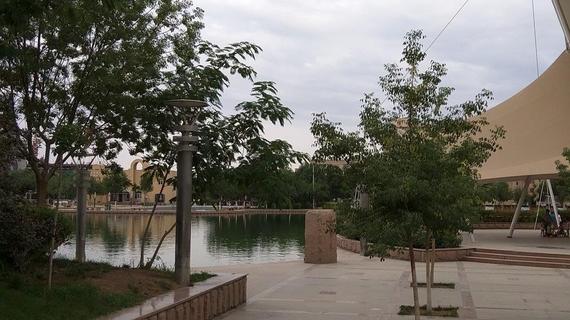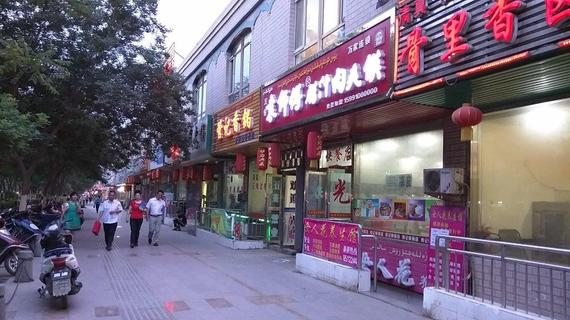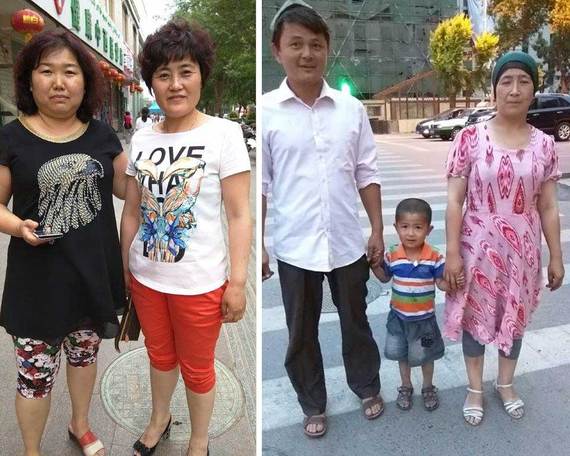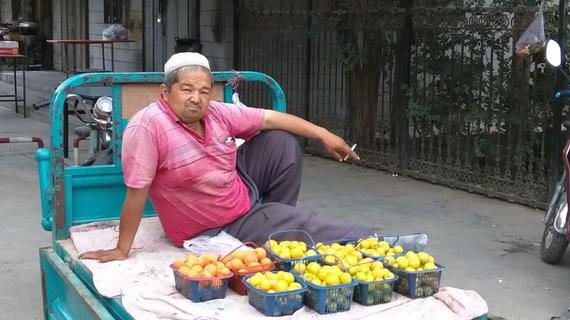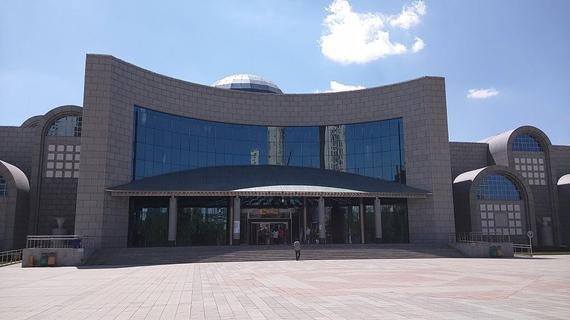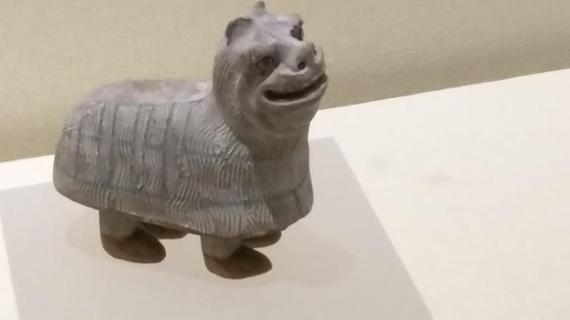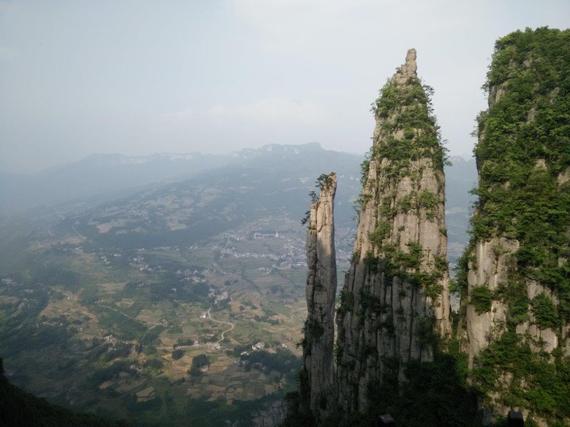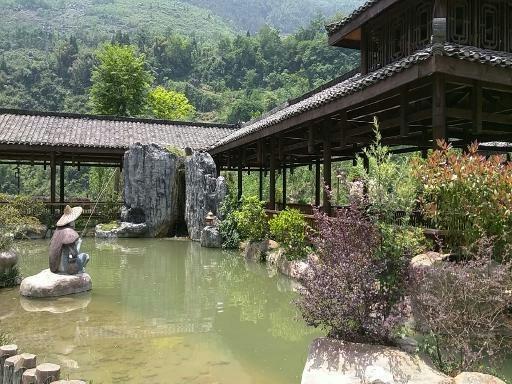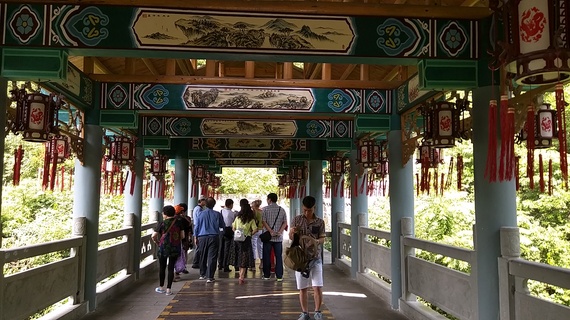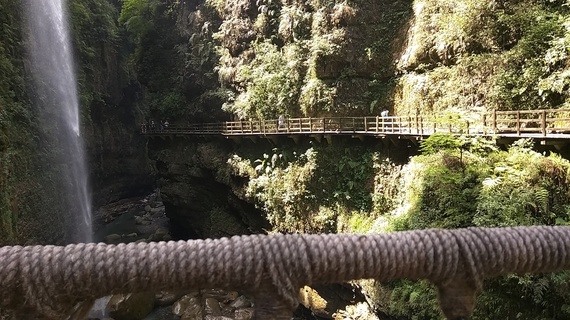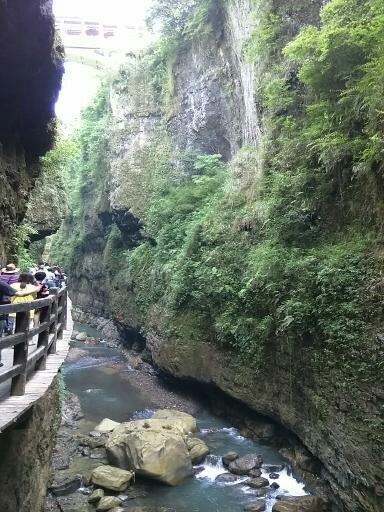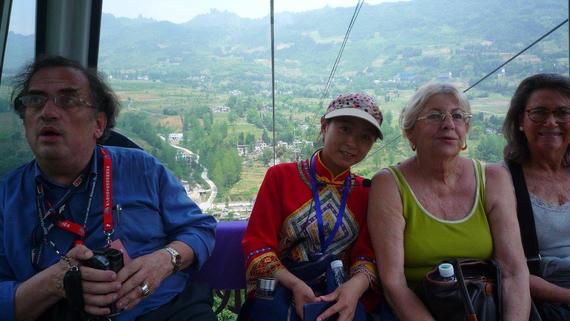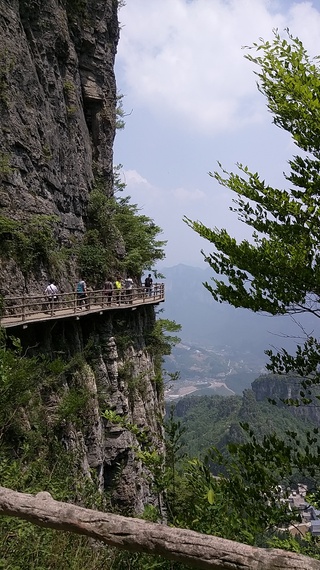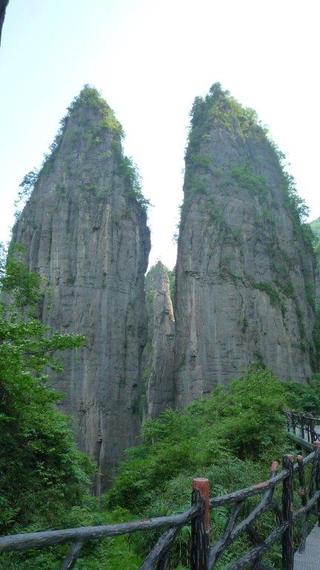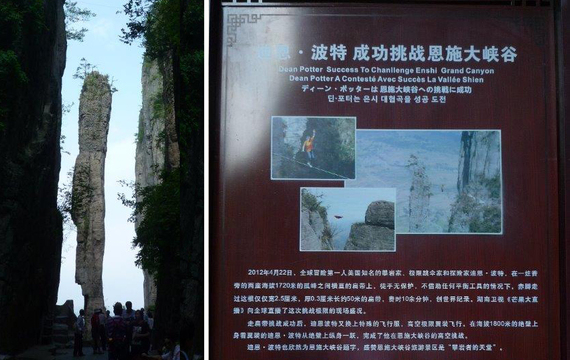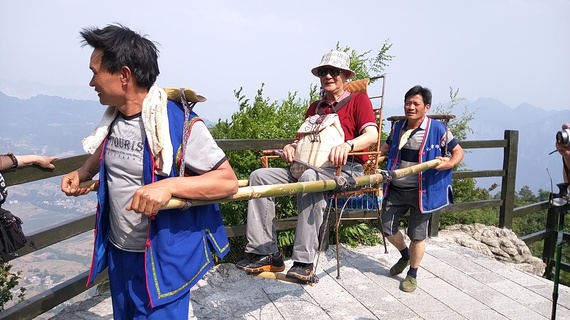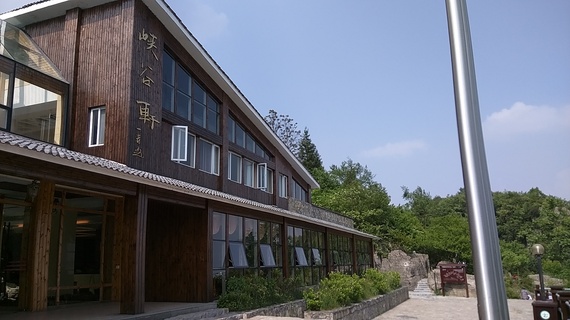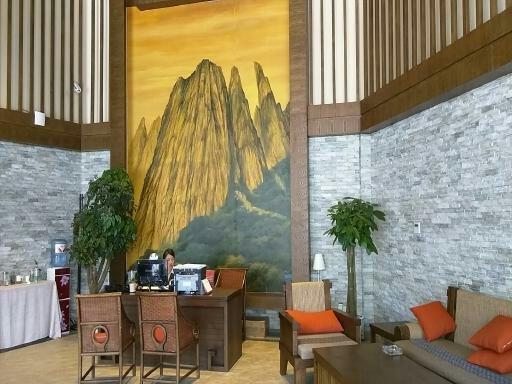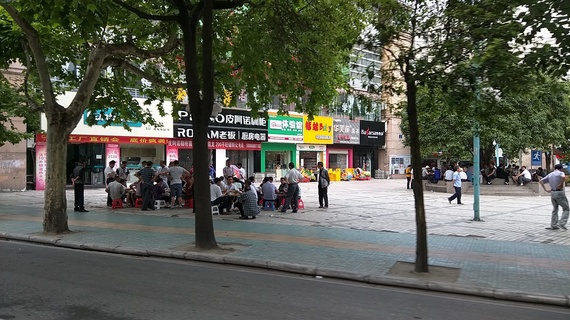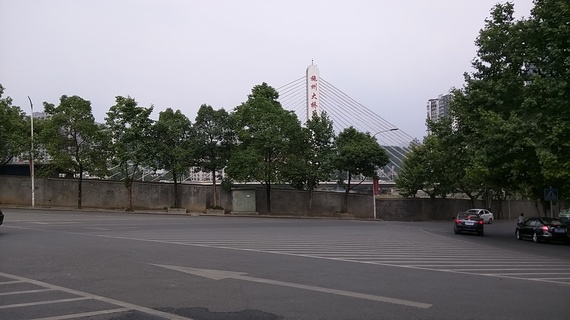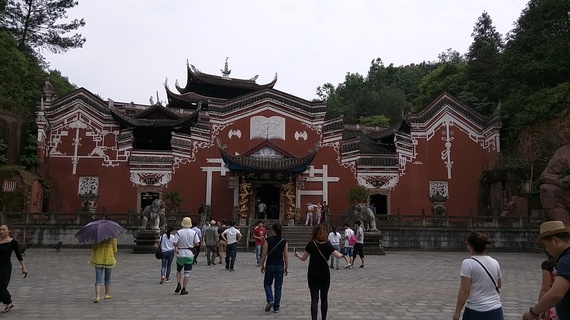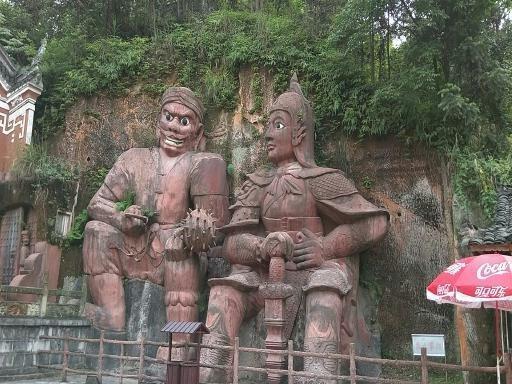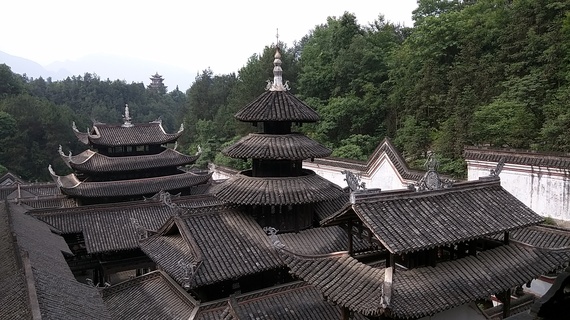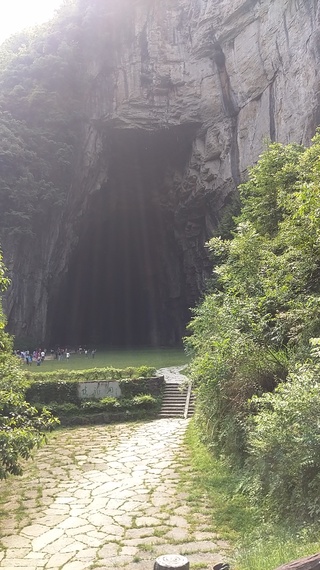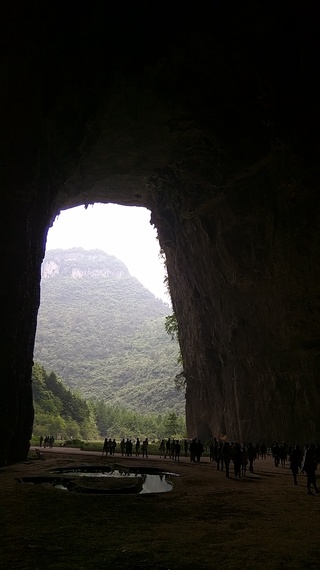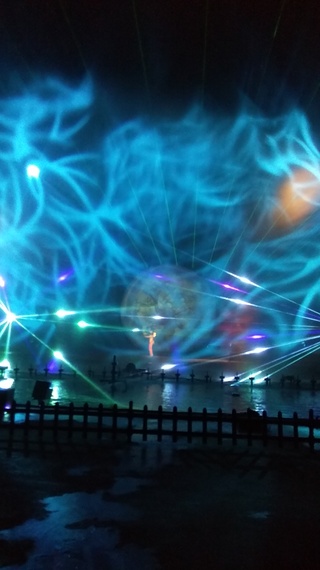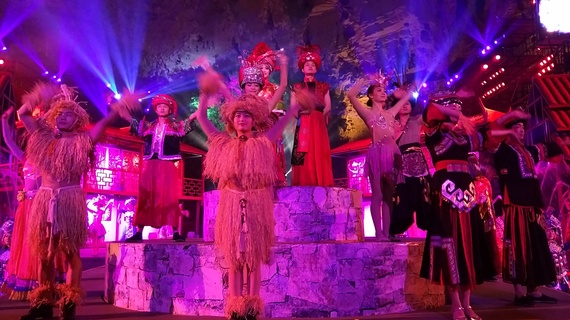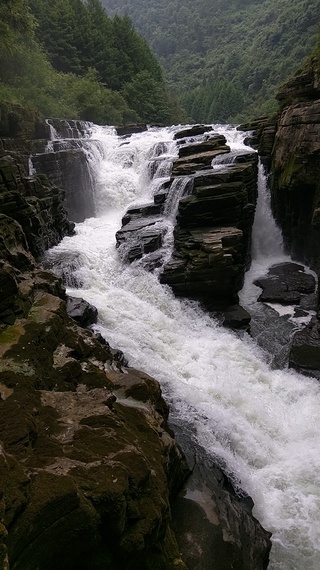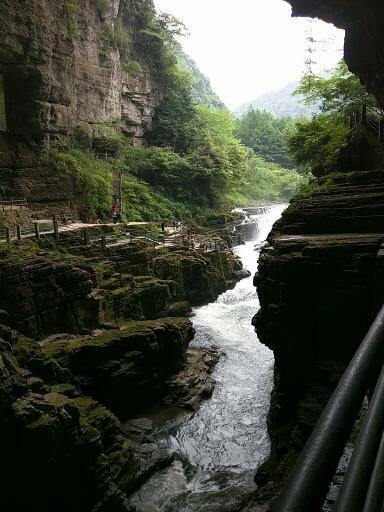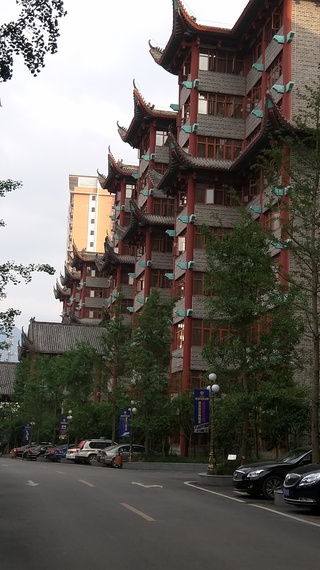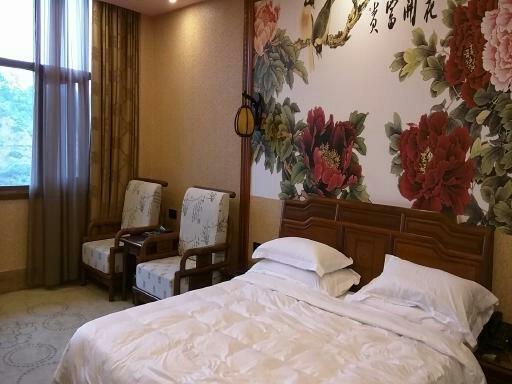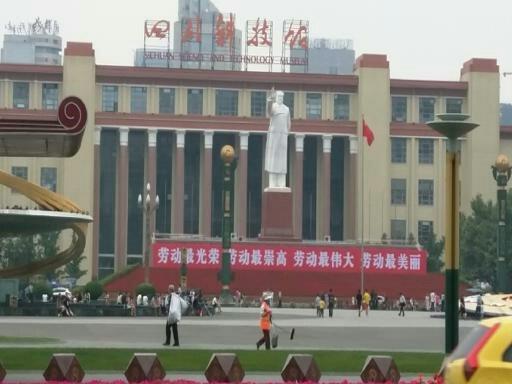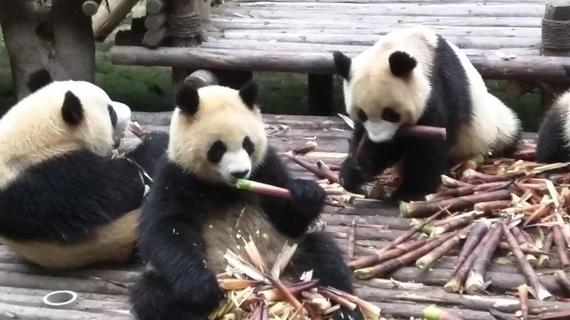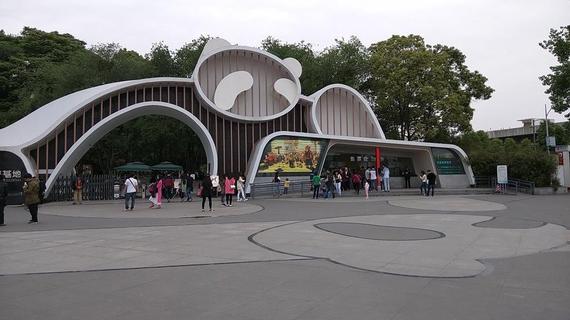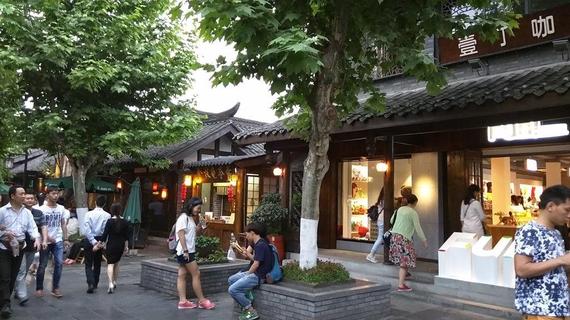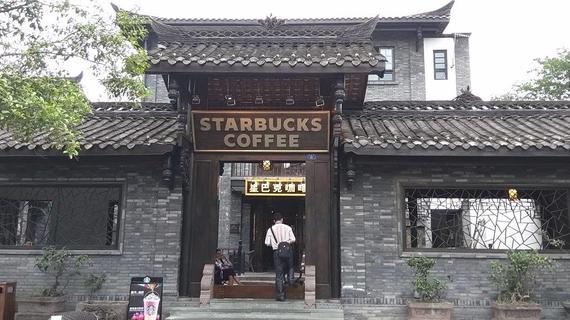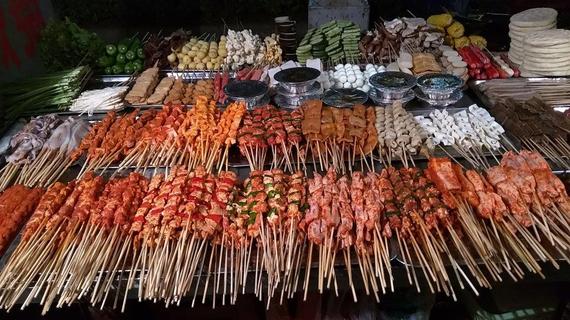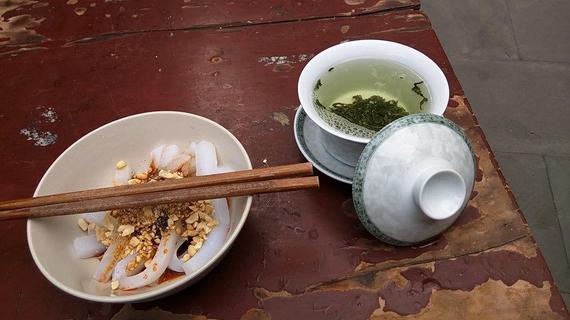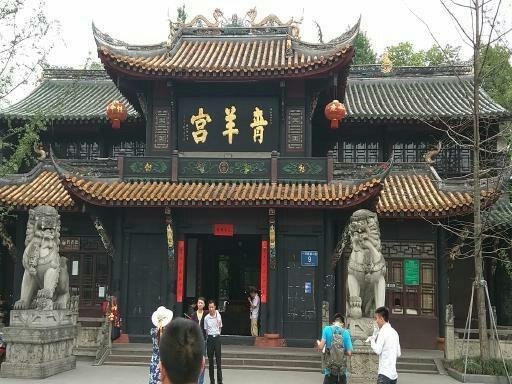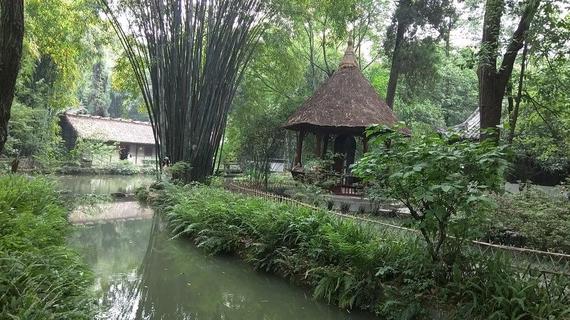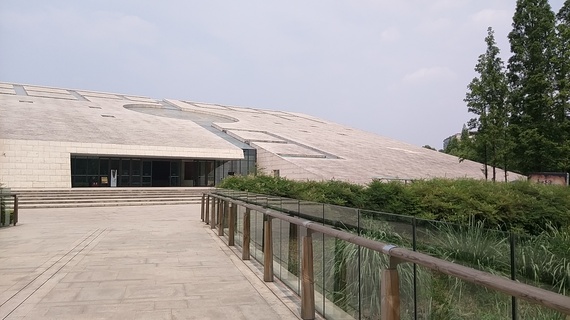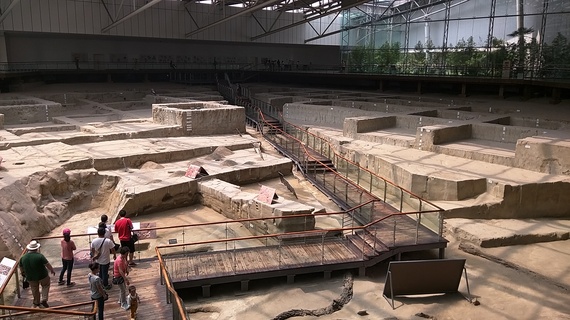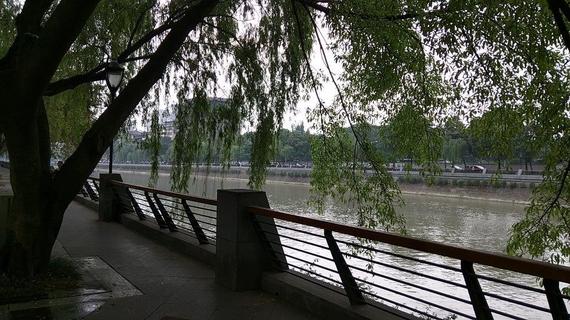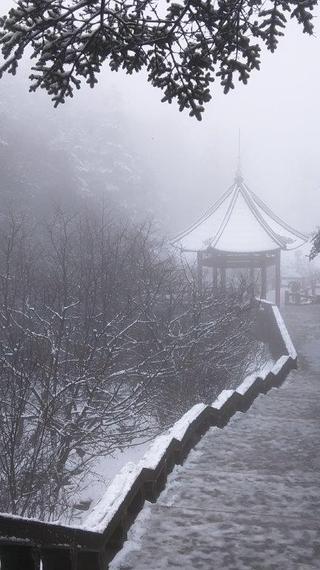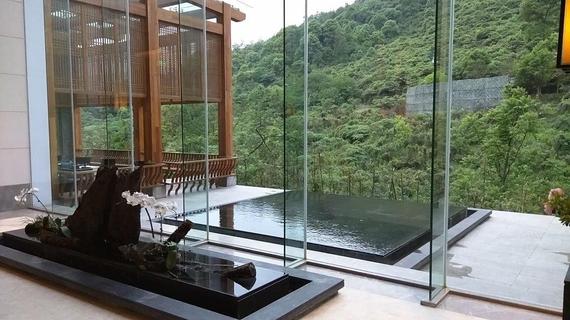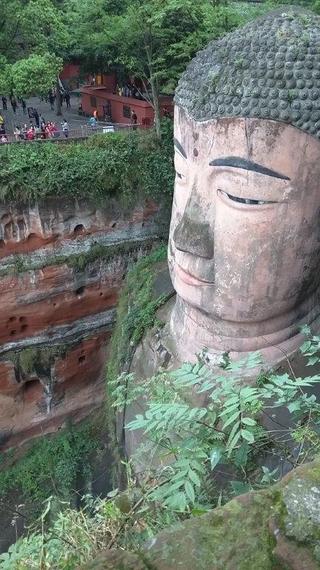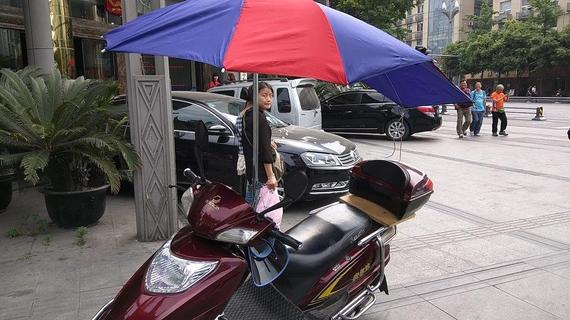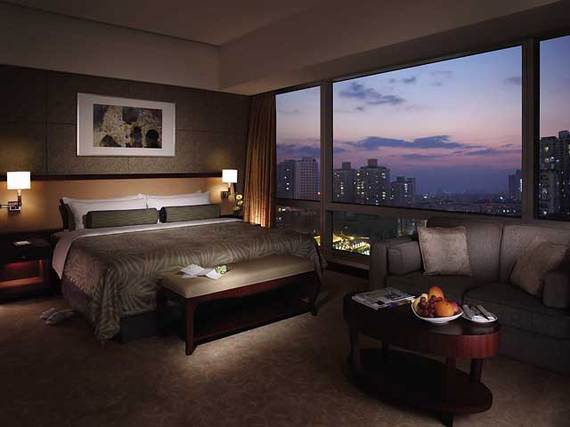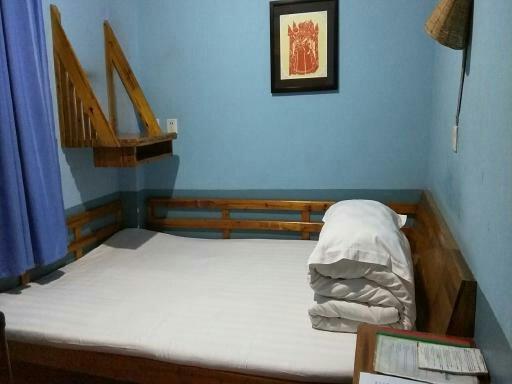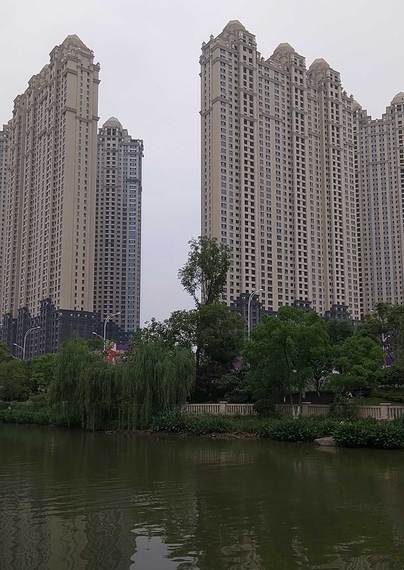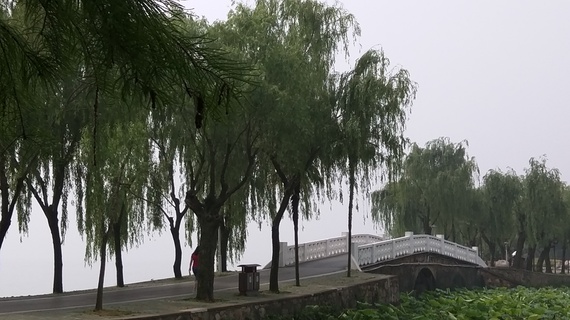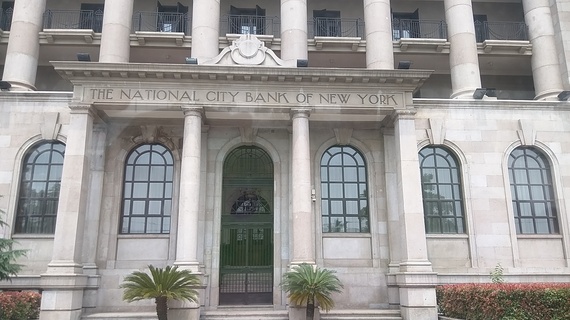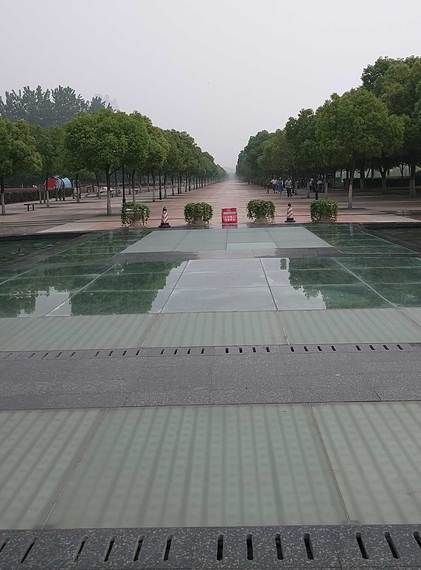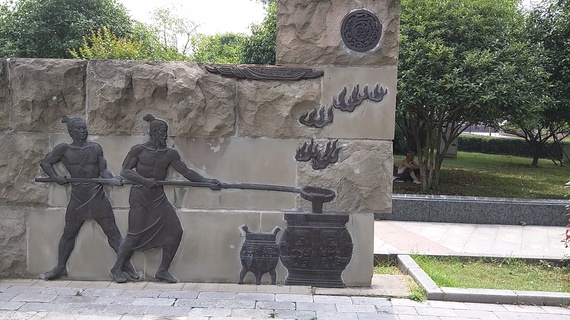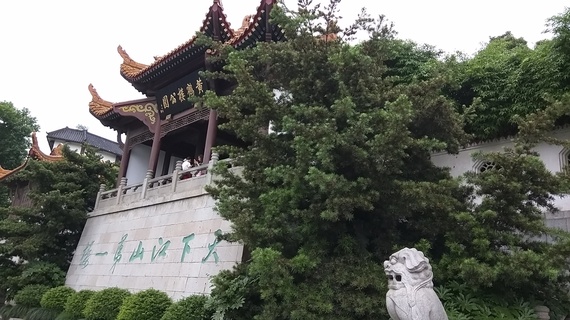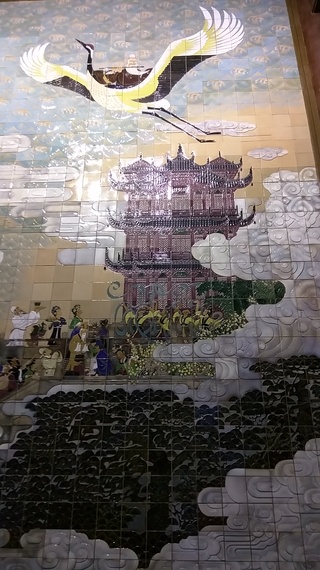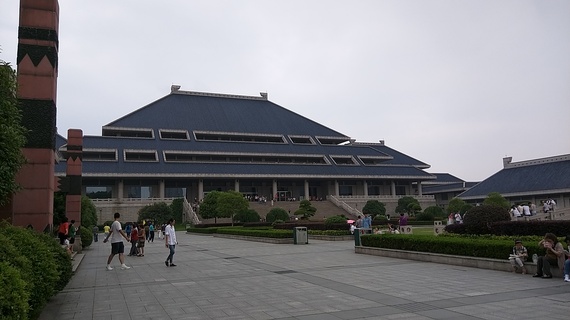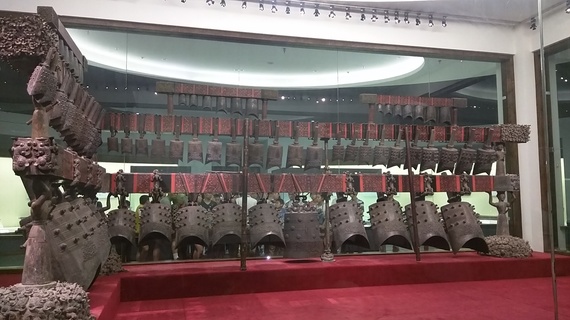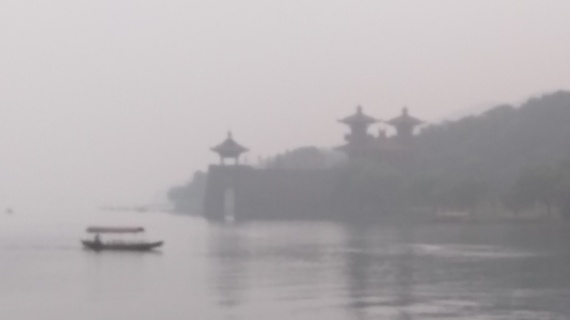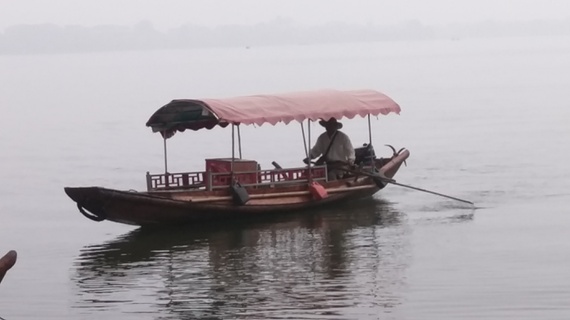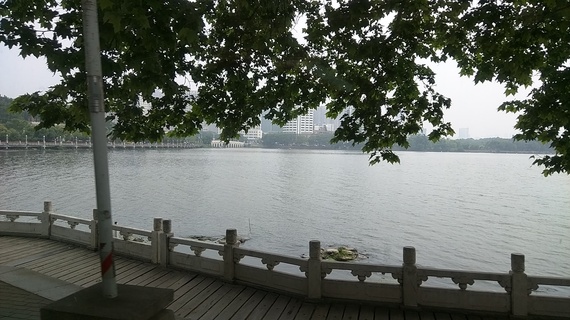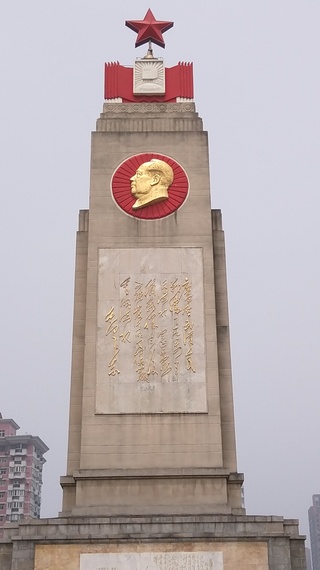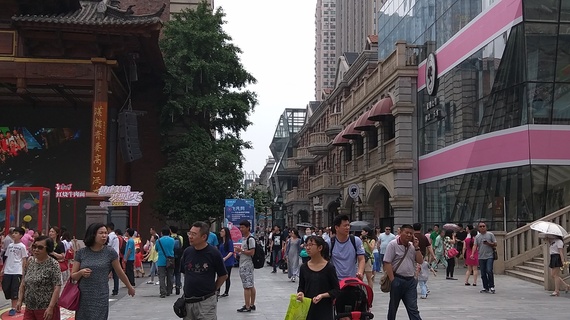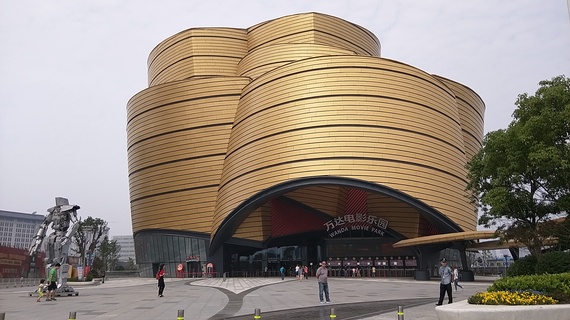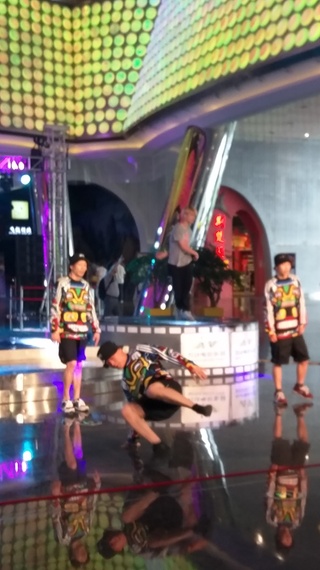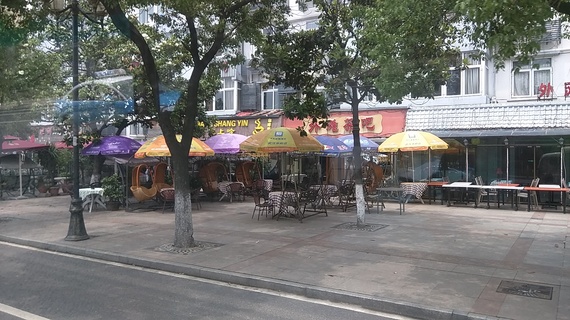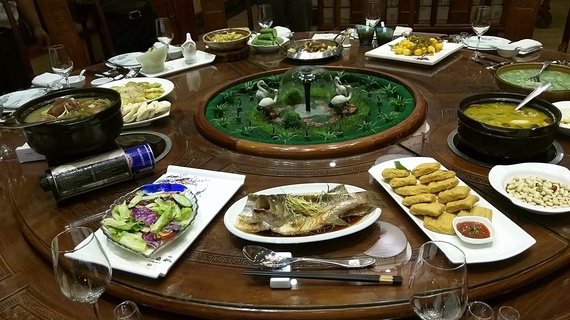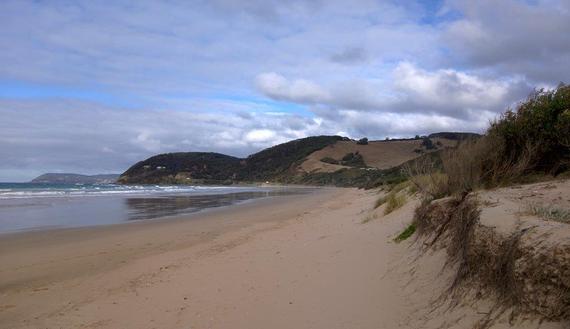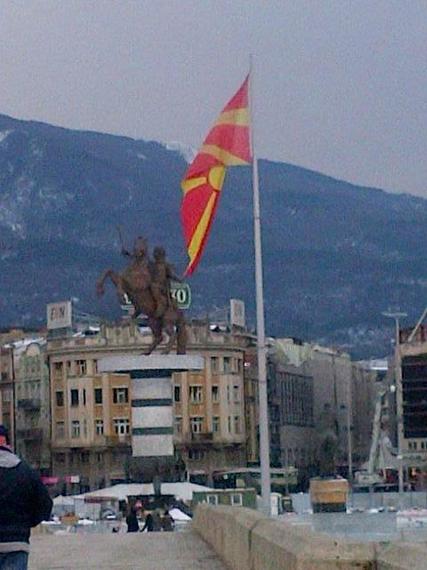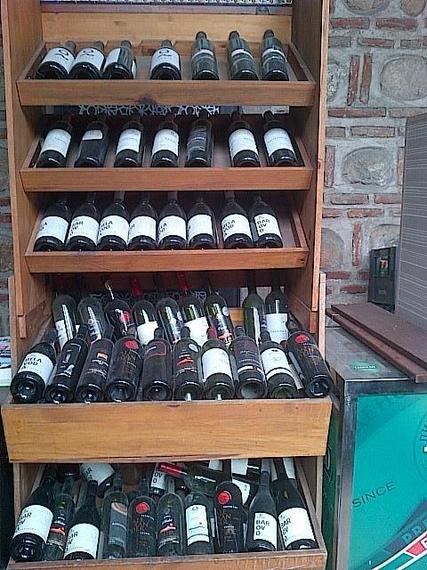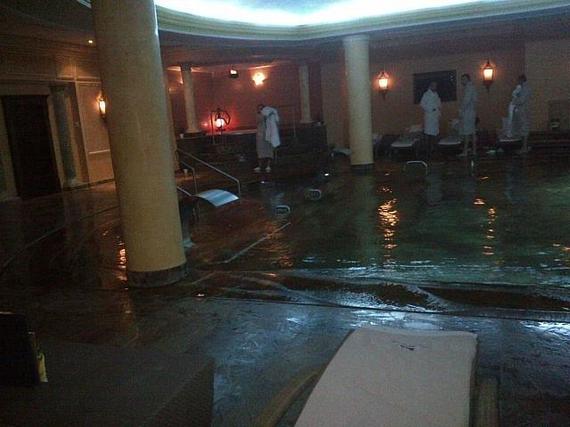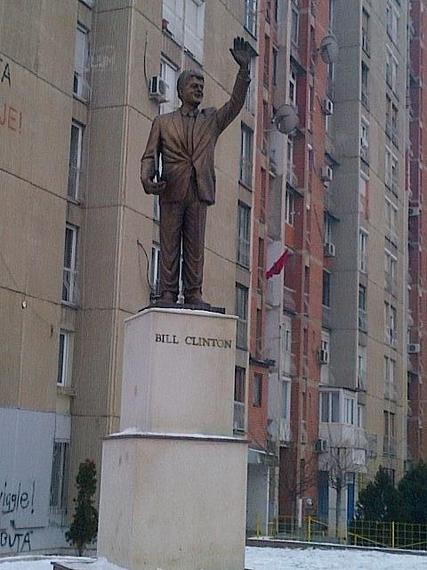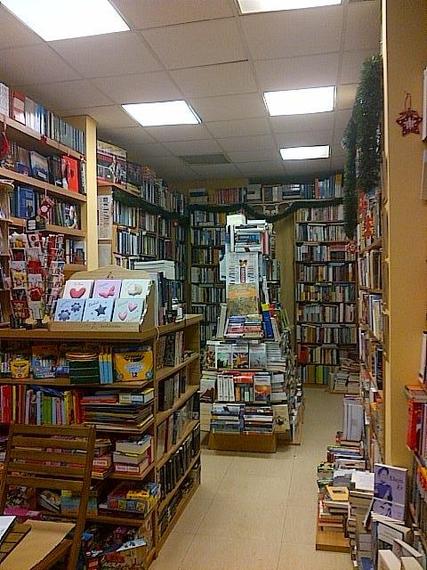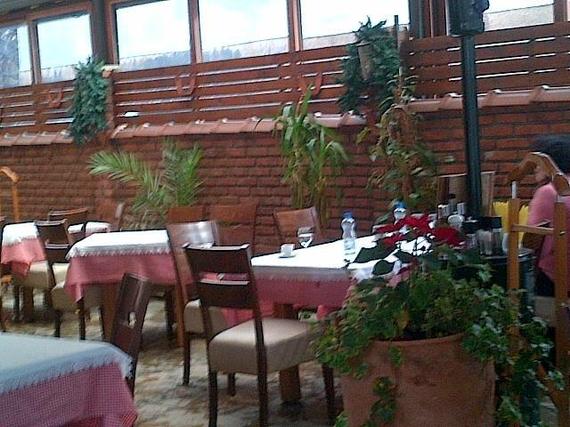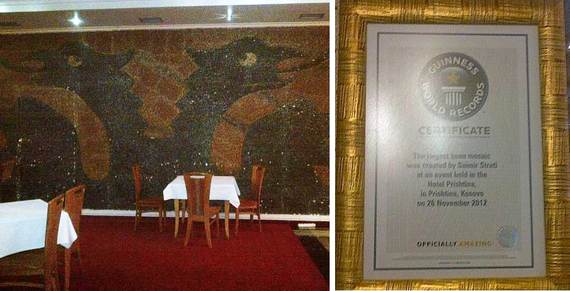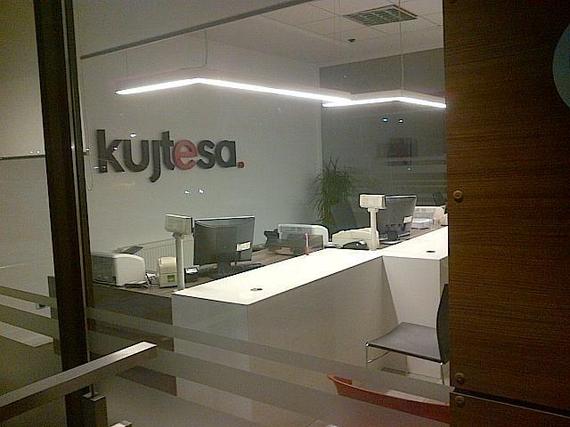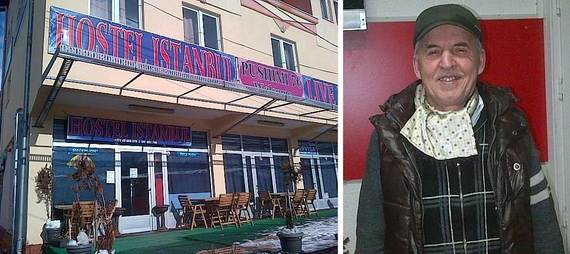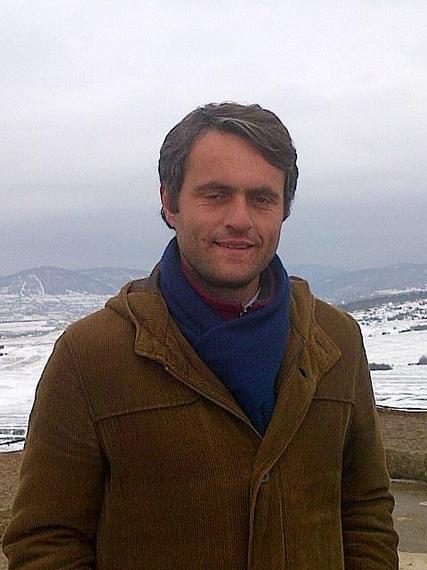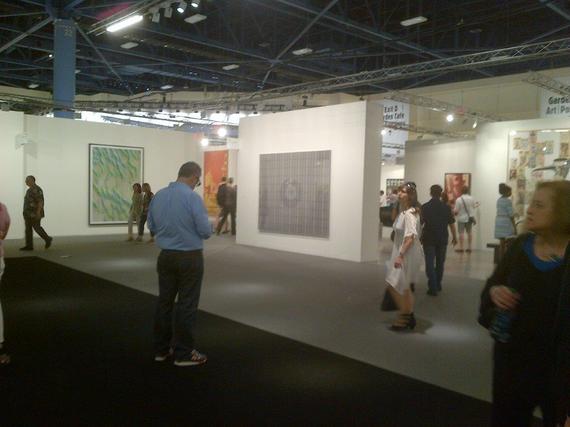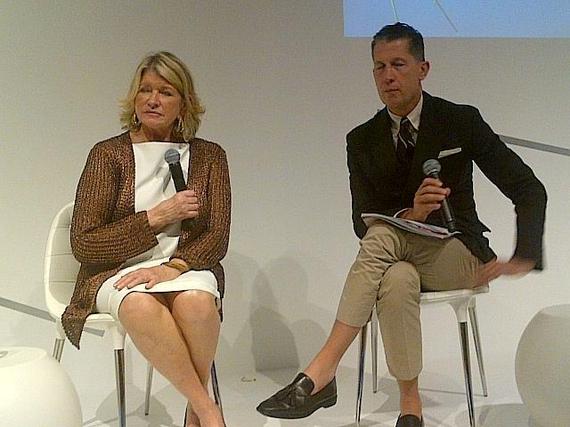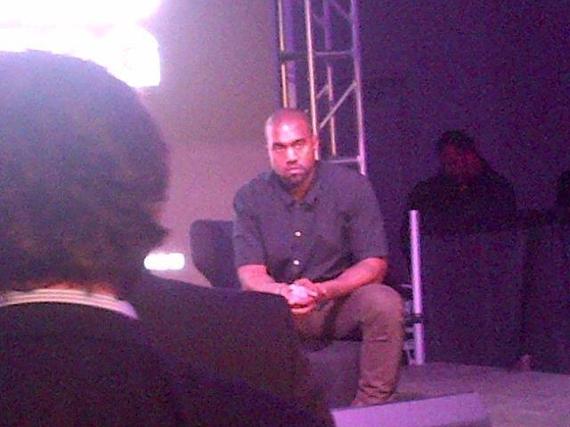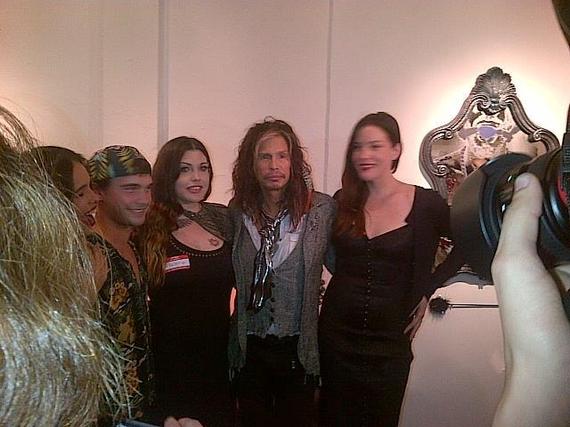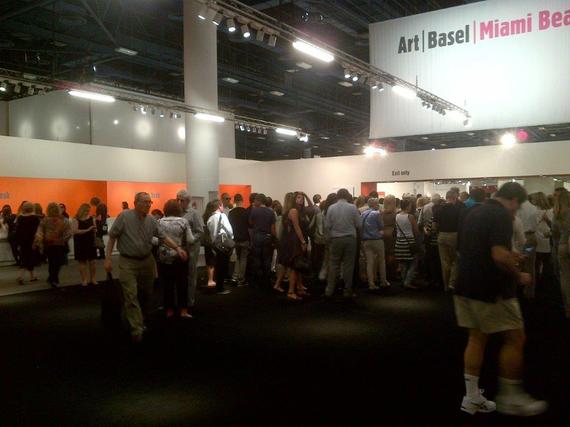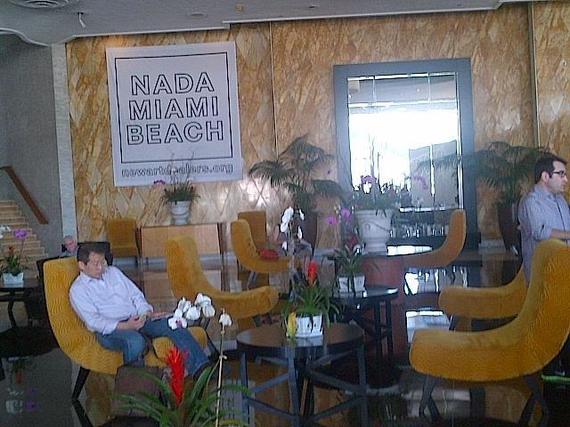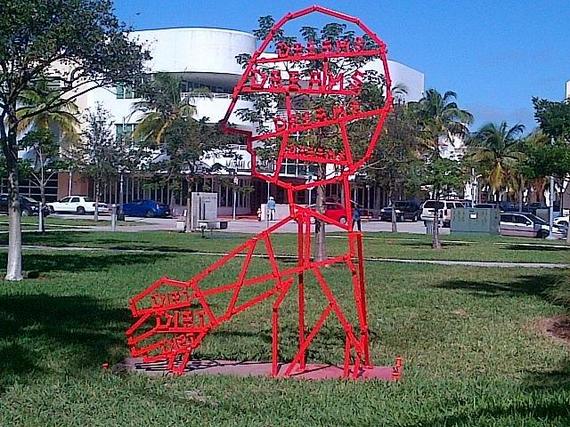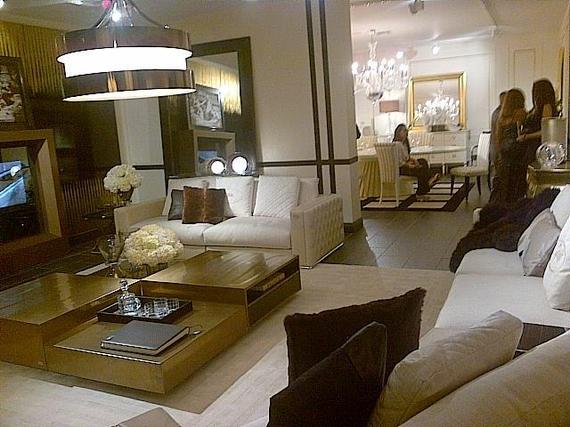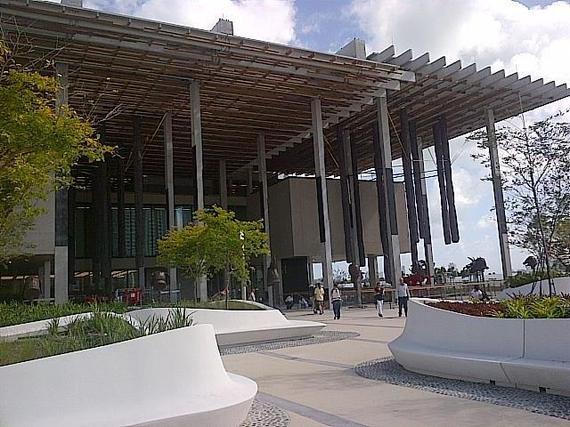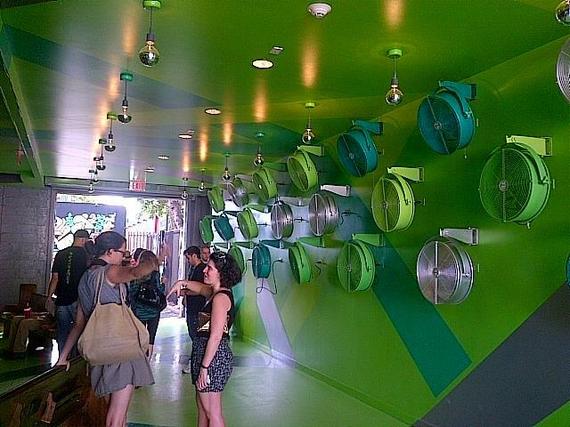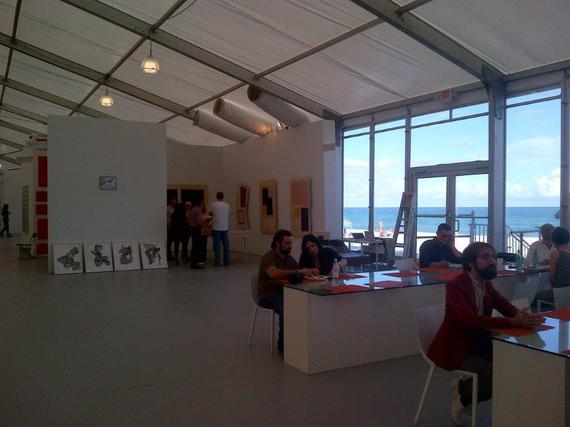No wonder the Spaniard colonists never found Machu Picchu — five centuries later, getting there is still a challenge. If you don’t want to hire a travel agency or wade through the backpacking options in popular guidebooks, considerable due diligence is required to get you to Peru then to Cusco then to Aguas Calientes, and from there up to the amazing Inca ruins. After spending literally hours online, I booked quite a satisfactory trip. To ease your trouble, here are some pointers:
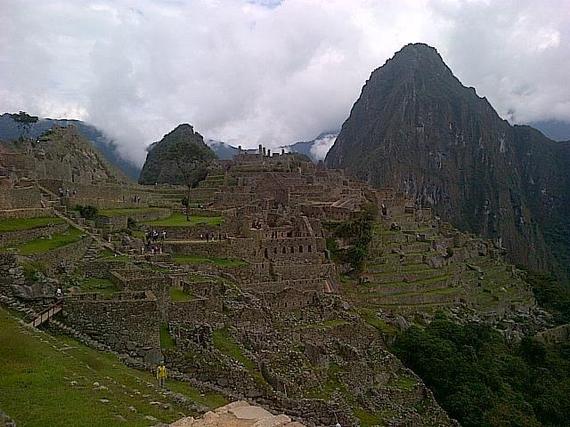 View of Machu Picchu
View of Machu Picchu
GET TO PERU.
Several airlines offer direct flights from the US. Since Lima is virtually the same time zone as New York, I favored the overnight LAN flight which leaves JFK at midnight and arrives in Lima at 6:45 AM. For those who have the stamina, it’s possible right on arrival to connect to a flight to Cusco, and because of the weather conditions early morning flights are recommended.
But Lima is an amazing and historic city with many sights to see and visit, it makes sense to spend a day or two caching up on sleep and seeing the Plaza Mayor, Cathedral, Santo Domingo Convent, world class museums, and — surfers at the beach.
Public transit into town is tricky and taxis are said to be unreliable so if you are staying, arrange with the hotel you’ve reserved to have a taxi waiting — the driver will be holding up a sign showing your name. The taxi fare into town is around a standard 50 soles which recently has been around $20.
Get some local cash, soles, when you land. but probably just $50-$60 The airport Global cash machines charge a fee in addition to what you pay your bank, and the currency booth exchange rates are considerably less favorable than what’s available in town plus they tack on a three percent commission.
GET TO CUSCO.
To avoid weather delays, early morning flights are recommended — the earliest leave around 5 am. Service is offered by LAN and Peruvian Airlines. I found the LAN website easier to work with.
Again you can choose to pause in town, but for many people Cusco’s altitude may require a painful adjustment. Going on to Machu Picchu, 3000′ lower than Cusco, gives you time to start acclimating before touring Cusco on your return.
So it’s preferable to go directly from the Cusco airport to the train bound for Aguas Calientes, the “base camp” of site visits.
Be sure to allow enough time to get from the airport to the depot. Another catch: the “Cusco” station is actually in Poroy, half an hour away. Again it’s helpful to have pre-arranged a taxi. Booked through Ecopackers, Antonio was waiting for me when we landed at Cusco and charged 25 soles, around $10.
GET TO AGUAS CALIENTES.
Practically speaking it is preferable to BOOK THE TRAIN BEFORE BOOKING YOUR FLIGHT TO CUSCO!! PeruRail and Inca Rail both go from Cusco to Aguas Calientes, but only a couple trips per day. Especially during the busy season the seats can sell out. Though tickets are sold at the station, it is advisable to arrive with your reservation — and passport — in hand. Even on my “off season” trip in October there was no empty seat in my return car.
I selected PeruRail and after specifying online which train I preferred, I received a return email authorizing me to go ahead with the purchase and providing ID and credit card forms for the $173 fare which had to be filled out and scanned back.
PeruRail’s Vistadome service provided immaculate comfortable cars with plush leather seats, overhead windows, and snacks served by elegantly uniformed stewards. Seats face each other over folding tables and since they’re pre-assigned, you may well end up traveling backward and in close quarters with unpleasant fellow passengers who kick and refuse to unfold the table tray. For a double fee, posh alternatives include a dining car which eases the three-and-a-half hour 57 mile trip.
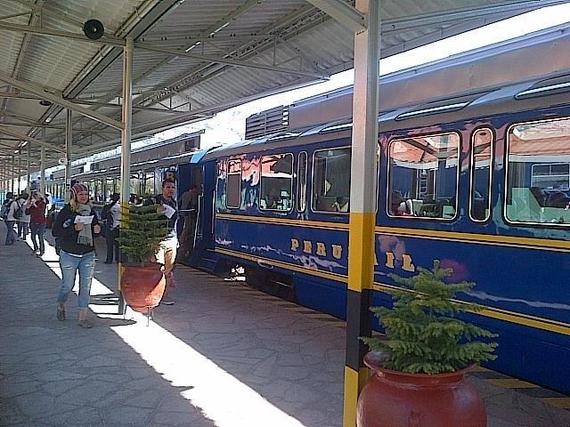 PeruRail at the station in Poroy
PeruRail at the station in Poroy
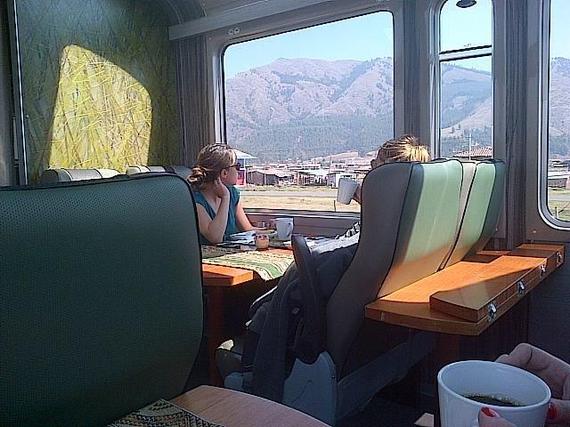 PeruRail en route to Aguas Caliente
PeruRail en route to Aguas Caliente
GETTING TO MACHU PICCHU.
When the train arrives in Aguas Caliente, you can decide to race up to the ruins, but it’s recommended to spend at least one night in the village. There is extensive internet access in town and it’s recommended to have your accommodations reserved. These range from backpacker hostels all over town to the impeccably modern five-star riverside Sumaq and the “jungly” Inkaterra which charge on the order of $1000 per night. Middle range options include Casa del Sol and Casa Andina but even those charge $300-$600 per night.
Tickets to the site can be pre-purchased online. Without tickets, try to arrive before late afternoon leaving time to go to the tourist office off the small main square and buy your admission ticket to avoid the congestion next day at the site. Foreigners are charged $62-$71 depending on the extent of the sites visited. The purchase must be made in currency, charge cards are not accepted, and — again, you must show your passport.
Also stop at the booth selling bus tickets for the ride up to the site. That fee is an additional $19 round trip. Bus service on Mercedes Benz mini-buses is almost constant. Even though queues up and down the hill can stretch up to hundreds of people, the wait for the 20 minute ride is usually under half an hour even during the peak months of May-September before the rainy season begins.
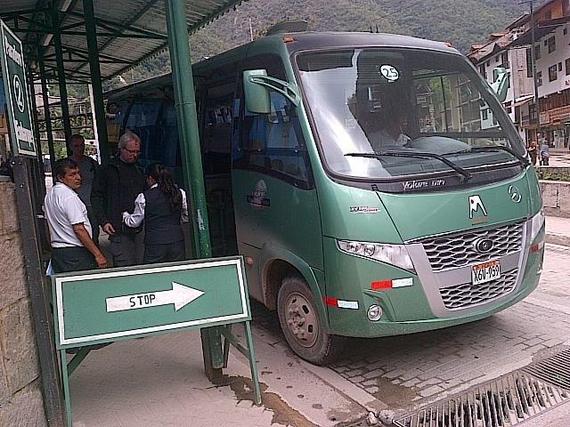 Shuttle bus from Aguas Calientes to Machu Picchu
Shuttle bus from Aguas Calientes to Machu Picchu
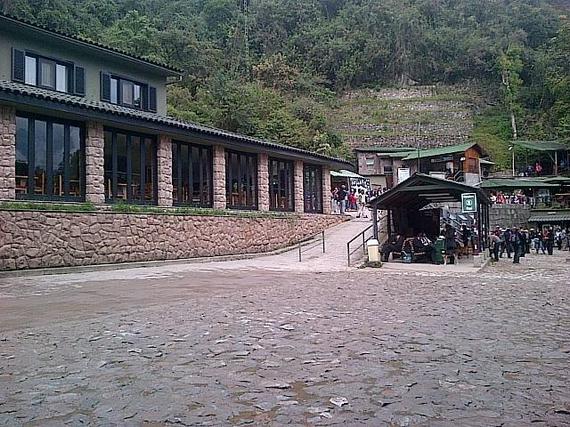 Entrance to Machu Picchu
Entrance to Machu Picchu
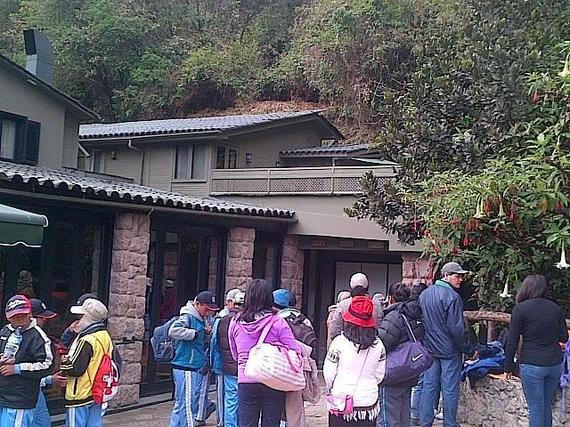 Crowd at Entrance to Machu Picchu
Crowd at Entrance to Machu Picchu
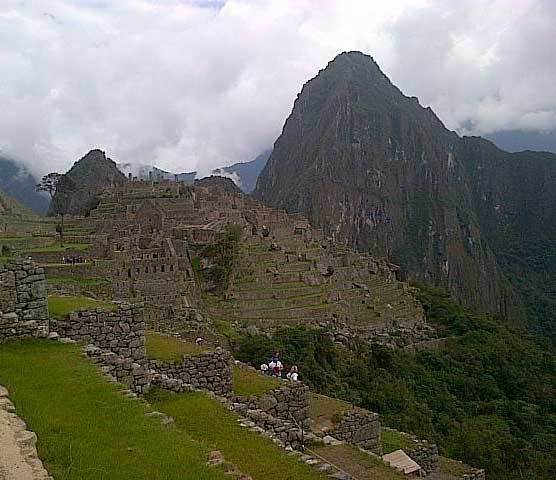 Machu Picchu Sights
Machu Picchu Sights
GETTING AROUND THE SITE
Dropped by the bus at the Machu Picchu entrance you encounter a mob of tour groups and guides soliciting your attention in several languages. There are several available guidebooks, but the site is large and it’s a relief to start with someone to lead you around. If you haven’t arranged with a travel agency back in town and don’t want to take pot luck, among potential guides is Felix Wilfredo Quispe, a 12-year veteran, second generation guide whose fee is around 150 soles, $50, for the two and a half hour tour.
Even when accompanied by a guide, your passport is required for admittance.
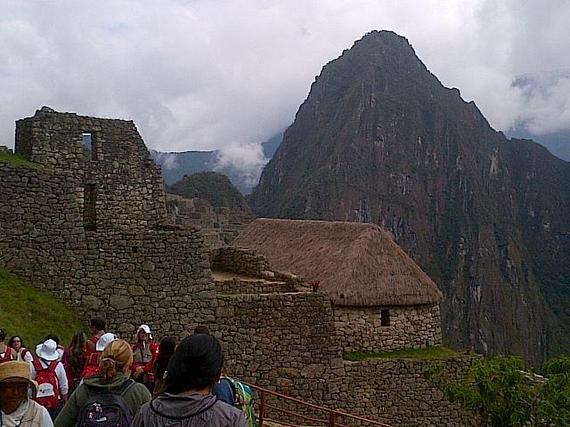 Sightseers at Machu Picchu
Sightseers at Machu Picchu
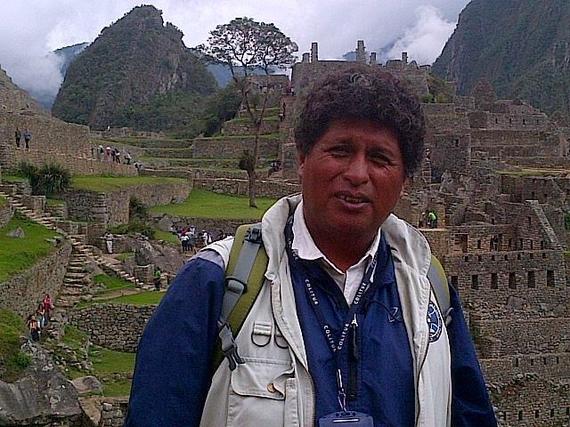 Machu Picchu Guide Felix Wilfredo Quispe
Machu Picchu Guide Felix Wilfredo Quispe
GETTING BACK
Returning home, the process is reversed. Coordinate with the train schedules which run early morning and late afternoon. It’s advisable to have arranged with your taxi to come back and pick you up at Poroy to take you either to a Cusco hotel or return flight. And then it’s back to Lima and on back home.
It took five centuries before explorer Hiram Bingham, the prototype Indiana Jones, “discovered” Machu Picchu. It was a miracle find and despite all the logistics, it truly is one of the Seven Wonders of the New World, a must-see and well worth the voyage.
TO SUMMARIZE, IN BRIEF:
Figure out when you want to go and check air tickets.
Book your rail ticket
Book the flights to Lima and on to Cusco,
Arrange hotel accommodations and taxis.
Consider guide arrangements.
Be sure to have your passport accessible, it’s required at almost every stage of the trip.
Almost all the trains and planes have strict baggage restrictions. Try to travel light.


